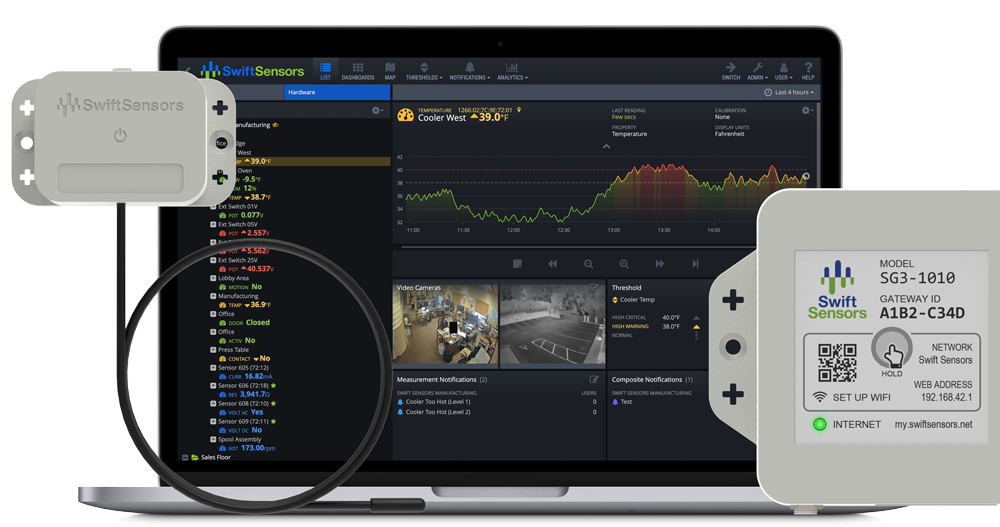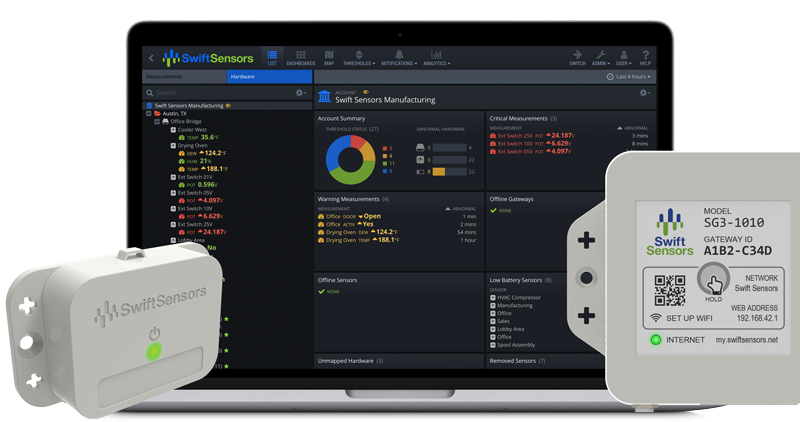Temperature control is crucial for any business that relies on refrigeration, from vaccine manufacturers and food production plants to local pharmacies, restaurants and grocery stores. When a refrigeration problem arises, these businesses need it resolved fast, before temperature excursions spoil their products.
By adding remote temperature sensors to their clients’ equipment, refrigeration service providers can offer maintenance as a service (MaaS) to keep tabs on equipment temperatures in real time, get alerts as soon as there’s a problem, and use data from multiple sensors to start troubleshooting before the repair technician even goes on the call. These services can shorten the time from issue to solution and protect customers from losses.
Remote refrigeration monitoring systems also ease recordkeeping and regulatory compliance requirements for customers by automatically logging temperature data and storing it in the cloud. From there, customers and service providers can access that data to generate reports and review historical trends for maintenance optimization.
Here are some examples of what a MaaS refrigeration monitoring program can look like:
Temperature monitoring for pharmacies, clinics and hospitals
Pharmaceutical safety depends on maintaining proper storage temperature ranges for vaccines, biological therapeutics and some medicines. For example, FDA guidelines specify that the Pfizer-BioNTech vaccine should be stored in an ultralow temperature freezer within a range of -80°C to -60°C. but allows for temporary storage for up to two weeks within a range of -25°C to -15°C.
Compliance with these guidelines, and similar ones for other pharmaceuticals, is critical for public health. Documenting compliance with a digital data logger is required by most health departments and state regulations. Remote temperature monitoring services help health care providers with both of these responsibilities.
That starts when a refrigeration service provider installs the right remote temperature sensor for the equipment. That could be a standard sensor that monitors temperatures between -40°C and +125°C, or it could be a subzero sensor with a range of -100°C to +200°C. Next, the provider installs a gateway to securely receive wireless data transmissions from all the sensors on the new network and upload that data to secure cloud storage.
On the cloud console, the service provider and the customer can log in to see temperatures in real time and review historical temperature data to verify that the equipment is working properly and that no temperature excursions have occurred.
To minimize the damage that power outages and equipment failures can cause to vaccines and medicines, the customer and the service provider can set the system to alert them via text, phone or email as soon as a temperature excursion occurs. This creates a virtual freezer alarm that can spur a quick response to prevent product loss. For example, when a service provider gets an alert that a freezer is operating out of range, they can immediately contact the customer, determine if the problem is an unplugged unit or open door, and get a service technician into the field right away if there’s a problem with the equipment’s function.

Our Vaccine Package contains all the hardware and documentation that refrigeration service providers need to set up a low-cost pharmaceutical wireless sensors system for a customer, including NIST calibration certificates. Installation takes a few minutes, and the sensor batteries last up to eight years, so maintenance requirements are minimal.
Food manufacturing, grocery and food service temperature monitoring
Food waste cost the restaurant industry nearly $162 billion in 2010, and that figure has almost certainly grown in the past decade. Meanwhile, foodborne illnesses harm 48 million Americans each year, according to the CDC. Real-time temperature monitoring can reduce food waste, illness outbreaks, and lost revenue by ensuring that food is stored at safe temperatures.
Refrigeration service providers can quickly retrofit commercial coolers and freezers with wireless temperature sensors to provide real time data, relieve employees of the task of manual temperature readings, and alert clients and service providers as soon as there’s a problem with equipment temperature. By pairing sensors with wireless video cameras, service providers can see at a glance if the problem is an open door – if not, they can get someone into the field quickly.

Swift Sensors Refrigeration Package
Like our Vaccine Package, the Swift Sensors Refrigeration Package bundles the hardware you need to set up remote temperature monitoring for your food processing and food service clients. You can connect dozens of sensors on a single gateway over a distance of up to 100 meters, making this cold chain monitoring package a convenient option even for large clients like supermarkets, warehouses and manufacturing plants.
Before low-cost wireless temperature sensors came to market, customers who wanted automatic monitoring with real-time alerts had to invest in costly upgrades to smart equipment. Now, refrigeration services providers can add sensors to clients’ existing equipment and monitor it for them. Offering installation and subscription-based monitoring gives you a new revenue stream while strengthening the relationship with your customers.
Want to learn more about offering Maintenance as a Service with low-cost temperature sensor networks? Contact one of our Sensor Specialists.
